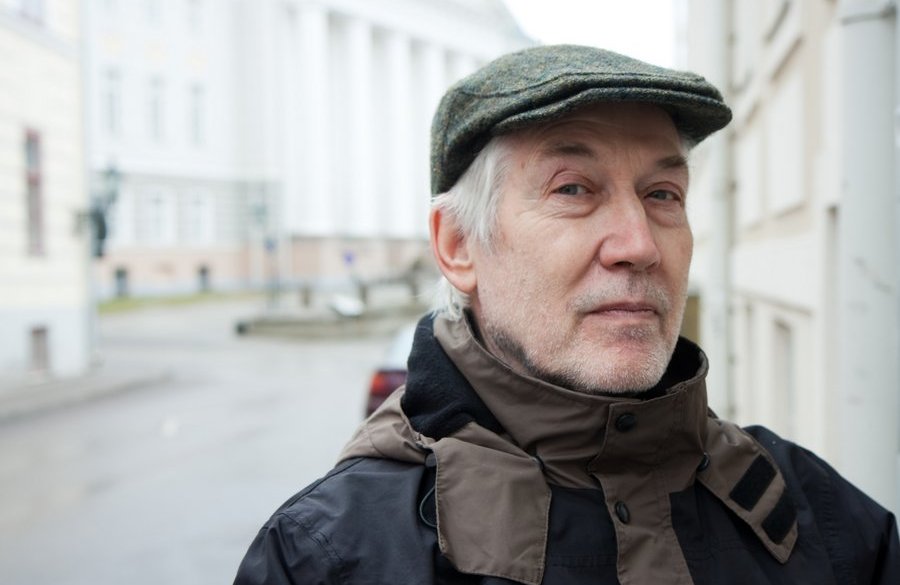It
can be assumed that Estonian art goes back to antiquity when the early settlers
to this area created carvings from bone and stone. Folk art and handicrafts were the most common art forms and influences
from the various occupations are evident in their art. Ethnographic materials
(usually as geometric designs) are found on mittens, belts, other textiles, and
art work. Art historians have
researched these for years to try to find a meaning behind these, but it’s not
clear if there is a meaning. Any key for deciphering these symbols has been
lost throughout history. Many of these symbols are incorporated into textiles and jewelry nowadays, and may have similar meanings to other Baltic ethnographic art.
Many
of the attractions on tourist’s lists fall in Estonia’s architecture. There are
many Medieval castles, forts, and
churches still stand to this day.
Old town Tallinn, placed as a UNESCO World Heritage Site, is a great
example of Gothic architecture, influenced by Germans who moved into this area.
Later Baroque and Rococo architecture dominated the Russian regional government
buildings. During the 19th century, Neo-Gothic and Art Nouveau can
be seen throughout the cities and countryside, especially in many of the
manors.
The
first person attributed as being the first professional artist is Johann Köler
(1826-1899). He is most widely
known for pulling himself out of poverty to attend the Art Academy in St.
Petersburg, Russia and making a name for himself as a portrait artist. He was
lucky enough and talented enough to attract the attention of many of the who’s
who in St. Petersburg. Köler was
also instrumental in promoting the art scene and local artists as well as art
education.
 |
| Johann Köler's mother |
Artist
Ants Laikmaa, the 13th child of his family, studied art and gave
exhibitions in several countries across Europe. He was most known for his watercolor paintings, mostly
landscapes and portraits. Although he never married, he did have one daughter.
Laikmaa bought a farm where he worked until he died; after he died, it was
turned into a museum in 1960.
 |
| by Ants Laikmaa |
I
found I’m quite attracted to the landscape painting of Konrad Mägi. His bright colors are a contrast to
that of Laikmaa who tended to use more subdued color contrast. While studying in Paris, he became
influenced by the Impressionistic style of painting, one that I’m a fan of.
After WWI, he began to delve into the Expressionist movement, and it could also
be seen in his work at that time.
Several years later, he traveled to study in Italy and was influenced by
the emerging Art Nouveau styles.
 |
| by Konrad Mägi |
Founded
in 1914 in Tallinn, the Estonian Academy of Arts is the only art school in
Estonia. It provides studies in art, design, media, art history,
conservation-restoration, and art education. During WWII and during the Russian
occupation, classes and programs were modified and some were completely removed
or untaught. However, after they regained independence, the school built itself
back up as the premier school to study art in Estonia.
The
earliest piece of literature written in the Estonian language was The Chronicles of Henry of Livonia. The
earliest printed material is a translation of Martin Luther’s Catechism. While the earliest form of Estonian
poetry was produced in 1637, it wasn’t until almost two centuries later when
Kristjan Jaak Peterson would be considered the founder of modern Estonian
poetry. Unfortunately, he died at
the young age of 21; to accomplish such a title at such a young age is
certainly a splendid feat (although much of his poetry was published
posthumously). Many of Estonian writers were still writing poetry in both
Estonian and German.
By
the time the late 19th century rolled around, poetry was still the
most popular writing style, but prose was making its entry as well. Different
groups of writers were starting to emerge as well: one was the Noor-Eesti
(Young Estonia), and another was made of writers of the Siuru movement.
Literature magazines were also beginning to be established during the first
decade of the 20th century. During the wars, prose took at turn
towards realism, as a way of coping with the changes that war brings. Once
Estonia became an entity of Russia again, many of the prominent writers went
into exile in neighboring countries and some even further away. Those who stayed were forced into a
strict censorship.
 |
| Jaan Kross |
Today,
Jaan Kross and Jaan Kaplinski are among the most famous Estonian writers and
have had their works translated the most.
Kross grew up in Tallinn and later studied at the University of Tartu. After the Nazis invaded Estonia, he was
locked up on charges of promoting Estonian nationalism. When the Russians took over, he was
arrested again; this time, eventually sending him to a forced labor camp in
Russia for a total of eight years. Once he was finally free to return to
Estonia, it was 1954, and he started writing. The Czar’s Madmen and Professor
Martens’ Departure are two of his most well-known novels and most
translated. One novel, Excavations, is thought by some literary
critics to be one of his best works; however, it has only been translated into
German.
 |
| Jaan Kaplinski |
Jaan
Kaplinski is a writer, poet, philosopher, and translator. Influenced by Eastern
thought (mainly Taoism and Buddhism), he’s translated a number of Chinese
classical poems. During the Soviet occupation, Kaplinski was one of the authors
of the “Letters from 40 Intellectuals,” an unpublished letter written regarding
the behavior of authorities during that time. He has also been a member of the
Estonian parliament since the mid-1990s. While he has switched parties a few
times, he’s currently a member of the Estonial Social Democratic Party. And
interestingly enough, he also has a main-belt asteroid named after him: 29528
Kaplinski was discovered in January 1998.
Up
next: music and dance



No comments:
Post a Comment